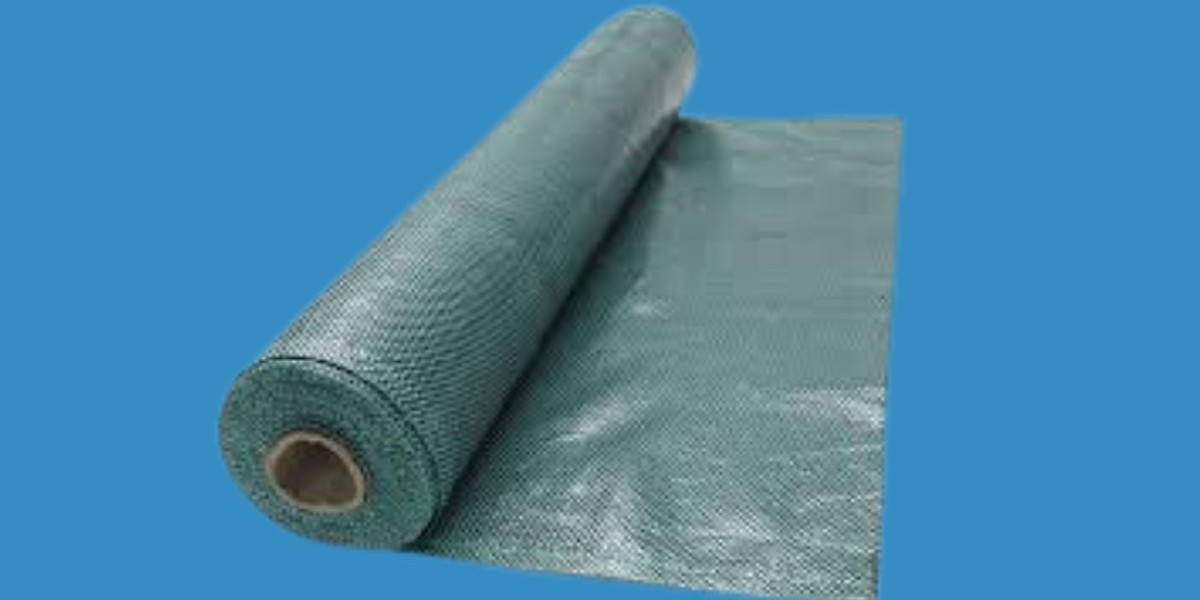Silt fences are essential tools used in construction and other development sites to manage stormwater runoff and reduce soil erosion. They are especially useful during construction activities, which can significantly disturb the land. Stormwater runoff, if not controlled properly, can carry sediments, pollutants, and debris into nearby water bodies, leading to pollution and environmental degradation. A silt fence, a temporary sediment barrier, is installed around construction sites to prevent soil erosion by filtering out sediment from stormwater before it enters storm drains or nearby rivers and streams. This method is both cost-effective and efficient, making it a popular choice among contractors and environmental specialists.
Silt fences, especially those provided by reliable Silt fence manufacturers in India and other regions, come in various designs and qualities, ensuring that they meet the specific needs of different projects. These fences are made from durable fabric materials such as polypropylene or polyester and are designed to filter and trap soil particles while allowing water to pass through.
The Role of Silt Fences in Erosion Control
Erosion control is one of the primary functions of silt fences on construction sites. During construction, soil is disturbed, and the natural vegetation that typically holds the soil in place is removed. This makes the soil highly susceptible to erosion, especially during heavy rains. Without proper erosion control measures, loose soil can be washed away by runoff, which not only creates a mess on-site but can also lead to sedimentation in water bodies.
Silt fences are strategically placed around the perimeter of the construction area to intercept the flow of stormwater, allowing water to pass through while trapping sediment. This reduces the amount of soil lost during rainfall and prevents contamination of nearby water sources. By working as a physical barrier, silt fences provide temporary but effective erosion control until permanent solutions like landscaping or replanting vegetation can be established.
Benefits of Using Silt Fences for Stormwater Management
One of the most significant advantages of silt fences is their ability to manage stormwater runoff and prevent sediment-laden water from polluting the environment. These barriers act as a filter, allowing clean water to flow through while trapping the sediment. As a result, they help maintain the quality of nearby water sources and prevent the negative impacts of soil erosion on aquatic life.
Additionally, silt fences are relatively inexpensive compared to other stormwater management solutions, making them a cost-effective choice for construction sites. Their installation is quick and easy, which is ideal for sites that require temporary solutions. The fabric used in silt fences is designed to withstand varying weather conditions, ensuring durability even in heavy rain or wind.
Silt fences are also flexible and can be adjusted to suit the specific needs of the site. Depending on the size and location of the construction project, these barriers can be customized to offer optimal protection. This versatility makes silt fences an indispensable tool in stormwater management.
Choosing the Right Silt Fence for Your Project
When selecting a silt fence for a construction site, it is crucial to choose one that is appropriate for the specific site conditions. Several factors influence the performance of a silt fence, including the type of soil, the amount of rainfall, and the slope of the land. A silt fence manufacturer can help guide you through the process of choosing the right material and specifications for your site.
High-quality silt fences are typically made from woven or nonwoven geotextile fabric, which offers excellent filtration capabilities. The fabric should be designed to withstand tearing and puncturing, which can occur during storms or when exposed to heavy winds. Additionally, the fence should be tall enough to handle the expected volume of runoff, with stakes firmly securing it to the ground to ensure it remains in place during inclement weather.
By working with experienced Silt fence manufacturers, contractors can ensure that they receive products that meet both environmental standards and durability requirements. The manufacturer should be able to provide recommendations on the type of silt fence best suited for the specific needs of your project.
Installation of Silt Fences: Best Practices
Proper installation is crucial to ensuring the effectiveness of silt fences in stormwater management. To begin with, the fence should be installed at the correct location, typically along the perimeter of the construction site or in areas where water flow is concentrated. It should be placed in such a way that it intercepts the runoff and allows the water to flow through while trapping sediment.
The fabric should be securely anchored into the ground to prevent it from being dislodged by water or wind. It is essential to bury the bottom of the silt fence into the soil to avoid water running underneath it. If the fence is not properly anchored, sediment can bypass the barrier, making it ineffective.
In addition to proper installation, regular maintenance is necessary to keep the silt fence functioning correctly. After heavy rainfall, the fence should be inspected for any damage or clogging. If the fence becomes clogged with sediment, it should be cleaned or replaced to ensure continuous protection. Silt fence exporters often recommend regular checks to ensure that the fence is working at its full potential.
Maintenance and Monitoring of Silt Fences
While silt fences are low-maintenance, they do require periodic inspections to ensure that they remain effective throughout the duration of a construction project. It is essential to monitor the condition of the fence after heavy rain or storm events, as this is when it is most likely to become clogged with sediment or damaged by the force of water.
The maintenance process includes clearing any sediment buildup on the fabric, repairing any tears or holes, and ensuring that the stakes are firmly in place. If the silt fence has been compromised and is no longer providing adequate sediment control, it may need to be replaced. Regular monitoring and maintenance ensure that the fence continues to perform its intended function without failure.
Environmental Impact and Compliance with Regulations
One of the key reasons for using silt fences is their environmental impact. They play a significant role in protecting water quality by preventing sediment from being carried into nearby streams, rivers, and lakes. In many regions, especially where construction is near sensitive environmental areas, local regulations require the use of silt fences to control runoff and erosion.
By adhering to environmental standards and using high-quality silt fences from reputable silt fence manufacturers, construction companies can comply with these regulations and minimize their impact on the surrounding ecosystem. This compliance not only helps protect natural resources but also ensures that construction projects proceed without causing legal or financial repercussions.
Why Choose a Reliable Silt Fence Manufacturer or Exporter?
Working with a trusted silt fence manufacturer in India or a reputable exporter is vital for getting high-quality products that meet industry standards. These manufacturers and exporters offer products made from durable materials that provide long-lasting protection against soil erosion and stormwater runoff. A reliable manufacturer can provide valuable expertise and recommendations based on the specific needs of a construction site, ensuring that the right type of fence is selected for optimal performance.
Choosing a manufacturer that is experienced in the production of silt fences ensures that the product meets environmental standards and offers maximum durability. Many manufacturers also offer customization options, allowing contractors to tailor the silt fence to meet the unique challenges of their project.
Conclusion
In conclusion, silt fences are an effective and affordable solution for managing stormwater and controlling erosion on construction sites. By preventing sediment from entering water bodies and reducing soil loss, these fences help protect the environment and comply with local regulations. The proper selection, installation, and maintenance of silt fences are crucial for their effectiveness, making it important to work with reputable silt fence manufacturers and Silt fence exporters to ensure that high-quality products are used. With the right approach, silt fences can significantly improve stormwater management and contribute to a more sustainable construction process.
Frequently Asked Questions (FAQs)
1. Can silt fences be used for long-term erosion control?
Silt fences are primarily designed for temporary use during construction or land disturbance activities. While they are effective in managing erosion and sediment runoff, long-term erosion control often requires more permanent solutions such as planting vegetation, installing sediment ponds, or using other erosion control methods. Silt fences should be removed once the site has stabilized.
2. Can silt fences be used on slopes?
Yes, silt fences can be used on slopes, but special care should be taken to ensure proper installation. When installing a silt fence on a slope, the bottom of the fence should be buried in the soil to prevent water from flowing underneath it. Additionally, the fence should be placed along the contour of the slope to maximize its effectiveness in intercepting water runoff and trapping sediment.
3. Are silt fences reusable?
While silt fences are primarily designed for temporary use, they can be reused if they remain in good condition after removal. The fabric may need to be cleaned and repaired to restore its filtering capabilities. However, if the fence is damaged or heavily clogged with sediment, it may need to be replaced with a new one.

![Original 300-610 Exam Dumps - 300-610 PDF Dumps [2022] Forget to Fail](https://thewion.com/upload/photos/2022/04/9vvCjmbLjBA4OSkLLI3x_02_8552d141abb3f2dc184b187d3bcb60de_image.jpg)

